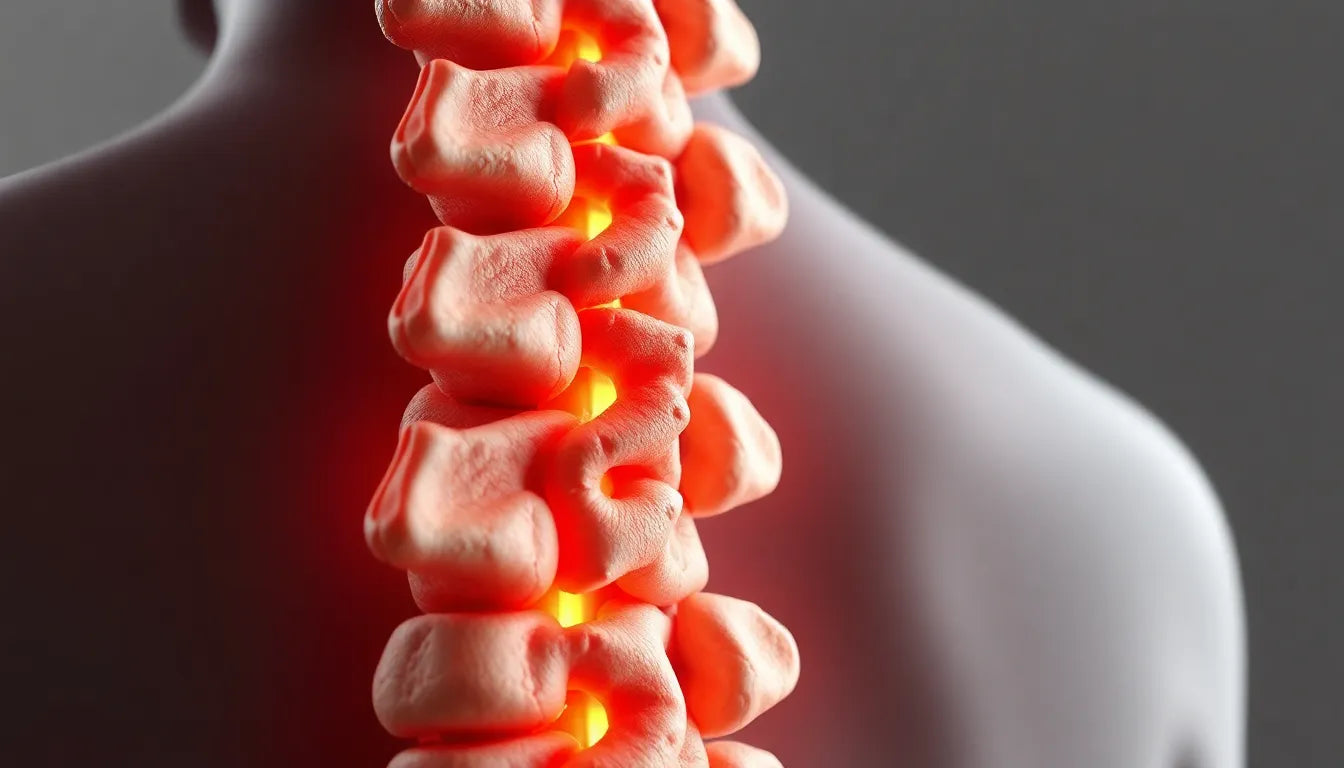Neck pain is a common ailment that many people experience at some point in their lives. While often it is a temporary discomfort that resolves on its own, persistent or severe neck pain can signal a more serious underlying issue, such as a herniated disc. Understanding the challenge of diagnosing neck pain is crucial, as a herniated disc in the neck can lead to significant discomfort and complications if not accurately identified and treated.
importance of accurate diagnosis
The importance of accurate diagnosis cannot be overstated when it comes to managing neck pain effectively. A herniated disc occurs when the soft inner gel of a spinal disc pushes through a tear in the tougher exterior. This can irritate nearby nerves and lead to pain, numbness, or even weakness in the neck, shoulders, and arms. Identifying the specific cause of neck pain through a thorough diagnostic process allows healthcare providers to tailor treatment plans that address the root of the problem, rather than just alleviating symptoms.
overview of the diagnostic process
The diagnostic process for a herniated disc in the neck typically involves several critical steps. Initially, it starts with a comprehensive medical history review and physical examination. During this phase, doctors assess symptoms such as pain intensity, numbness, or weakness, and perform physical tests to evaluate muscle strength, sensation, reflexes, and range of motion. These initial assessments help in determining the likelihood of a herniated disc and the need for further testing.
Following the initial assessment, imaging tests are often employed to confirm the diagnosis. Magnetic Resonance Imaging (MRI) is considered the gold standard due to its ability to provide detailed images of soft tissues, nerve roots, and disc conditions. In some cases, a Computed Tomography (CT) scan or CT myelography may be used as alternatives, especially when MRI is not feasible. These imaging tests are crucial in visualizing the extent of disc herniation and any associated nerve compression.
why accurate diagnosis matters
Accurate diagnosis is not only essential for effective treatment but also plays a vital role in preventing further complications. Proper identification of a herniated disc allows for more targeted treatment options, such as physical therapy, medication, or in some cases, surgical intervention. Early and precise diagnosis can prevent further nerve damage and complications, ensuring better long-term outcomes for patients. Moreover, it helps in differentiating a herniated disc from other potential causes of neck pain, such as arthritis or muscle strain, thereby avoiding unnecessary treatments.
In conclusion, understanding the diagnostic process for a herniated disc in the neck is crucial for anyone experiencing persistent neck pain. By recognizing the importance of accurate diagnosis, individuals can seek the appropriate medical attention and interventions needed to manage their condition effectively and prevent further health issues.
step-by-step diagnostic process for herniated disc in neck
Diagnosing a herniated disc in the neck involves a systematic approach that starts with an initial assessment and progresses through advanced imaging and diagnostic tests. This thorough process ensures that the cause of neck pain is accurately identified, allowing for effective treatment plans tailored to the specific needs of the patient.
initial assessment: medical history and physical exam
The diagnostic journey begins with a detailed review of the patient's medical history and a comprehensive physical examination. During this stage, healthcare providers focus on understanding the patient's symptoms, such as pain, numbness, or weakness in the neck, shoulders, and arms. Physical tests are conducted to evaluate muscle strength, reflexes, sensation, and range of motion. These assessments help in identifying any nerve involvement and provide critical information about the likelihood of a herniated disc.
imaging tests: the gold standard for diagnosis
Once the initial assessment suggests a potential herniated disc, imaging tests are employed to confirm the diagnosis. Magnetic Resonance Imaging (MRI) is the preferred method due to its ability to produce detailed images of the soft tissues, nerve roots, and discs. MRI is non-invasive and does not involve radiation, making it a safe and effective tool for visualizing the extent of disc herniation and any associated nerve compression.
In situations where an MRI is not feasible, a Computed Tomography (CT) scan may be used as an alternative. CT scans provide detailed images of the bone structures and discs, and when combined with myelography (using a contrast dye), they can offer enhanced visualization of nerve compression. While CT scans are quick and accessible, they do involve radiation exposure, which is a consideration when choosing the appropriate imaging test.
advanced diagnostic tests for complex cases
In certain cases, when the diagnosis remains unclear or additional information is needed, advanced diagnostic tests such as Electromyography (EMG) and X-rays may be conducted. EMG measures the electrical activity in muscles and nerves, helping to identify nerve compression and differentiate a herniated disc from other nerve disorders. Although EMG is invasive and requires expertise, it provides valuable insights into nerve function.
X-rays, while not definitive for diagnosing disc herniation, are useful for ruling out other bone-related issues. Myelography, which involves injecting a contrast dye into the spinal canal before a CT scan, can further clarify nerve compression if MRI results are inconclusive or unavailable.
comparing diagnostic tools: understanding their roles
Each diagnostic tool has its unique advantages and limitations, making it essential to choose the right test based on the patient's specific condition and medical history. MRI stands out for its detailed imaging of soft tissues and absence of radiation, while CT scans offer quick and detailed bone imaging. EMG provides critical nerve function data, and X-rays help exclude other bone conditions. Understanding these differences helps healthcare providers select the most appropriate tests to accurately diagnose a herniated disc in the neck.
importance of a patient-centric approach
Throughout the diagnostic process, a patient-centric approach is crucial. Patients should be well-informed about each step and understand how it relates to their symptoms and overall health. Preparing for tests and knowing what to expect can alleviate anxiety and ensure a smoother diagnostic journey. Clear communication between healthcare providers and patients enhances the effectiveness of the diagnostic process and ultimately leads to better treatment outcomes.
By following a structured and comprehensive diagnostic process, healthcare providers can accurately identify herniated discs in the neck, paving the way for effective treatment and improved quality of life for patients suffering from neck pain.
understanding the diagnostic journey for a herniated disc in the neck
Embarking on the diagnostic journey for a herniated disc in the neck involves more than just identifying symptoms; it's about understanding the interconnectedness of each step in the process. This holistic approach ensures that healthcare providers can tailor treatments specifically to the patient's needs, leading to more effective management of neck pain.
A patient-centric approach is crucial throughout this journey. Patients must be informed about each test and its relevance to their symptoms and overall health. This understanding not only aids in reducing anxiety but also empowers patients to actively participate in their healthcare decisions. By preparing for tests and knowing what to expect, patients can experience a smoother diagnostic process.
preparing for diagnostic tests
Preparation for diagnostic tests can vary depending on the type of test being conducted. For instance, before undergoing an MRI, patients are usually advised to remove any metal objects, as the magnetic field can interfere with the imaging process. It's also helpful for patients to inform their healthcare provider about any concerns, such as claustrophobia, as options like open MRIs or sedation may be available.
For tests like electromyography (EMG), patients should discuss any medications they are taking with their doctor, as certain drugs can affect test results. Understanding these preparations allows for a more accurate and efficient testing process.
frequently asked questions
what symptoms might indicate a herniated disc in the neck?
Common symptoms of a herniated disc in the neck include persistent neck pain, pain radiating to the arms, numbness, or weakness in the shoulders, arms, or hands.
how long does an MRI take, and is it safe?
An MRI typically takes between 30 to 60 minutes. It is considered safe as it does not involve radiation exposure, making it a preferred choice for imaging soft tissues.
will the tests be painful?
Most diagnostic tests for a herniated disc, such as MRI and CT scans, are non-invasive and painless. However, some tests like EMG may cause mild discomfort due to the insertion of needles to measure electrical activity in muscles.
what if I’m claustrophobic and need an MRI?
If you are claustrophobic, discuss this with your healthcare provider. Options such as open MRIs or sedation may be available to help alleviate anxiety during the procedure.
how soon will I get my results?
Results from diagnostic tests are typically available within a few days, but the exact timeframe can vary depending on the facility and the specific tests conducted.
Understanding the diagnostic process for a herniated disc in the neck is essential for anyone experiencing persistent neck pain. By being informed and prepared, patients can ensure they receive the most accurate diagnosis and effective treatment, ultimately leading to better health outcomes and relief from discomfort.
Sources
- NYU Langone Health. "Cervical Herniated Disc: Diagnosis."
- Columbia Neurosurgery. "Cervical Herniated Disc: Diagnosis & Treatment."
- UF Health. "Herniated Disc, Cervical: Diagnosis."
- Orthopedic Institute. "Cervical Disc Herniation: Causes and Diagnosis."
- Spine-health. "Herniated Disc in the Cervical Spine: Causes and Diagnosis."
- Dr. Anuj Prasher. "Herniated Disc: Diagnosis and Treatment."























